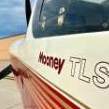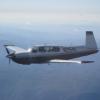-
Posts
247 -
Joined
-
Last visited
About fuellevel
- Birthday 07/17/1961
Contact Methods
-
Website URL
www.ciescorp.net
-
Skype
scott.philiben
Profile Information
-
Gender
Male
-
Location
Bend, OR
-
Reg #
TBD
-
Model
TBD
Recent Profile Visitors
fuellevel's Achievements
-
To insure we are getting good aftermarket installs - we are publishing common calibration curves for every aircraft type. As Aerospace Logic has the highest concentration of data points - this would be preferred data for the curves but we will take calibration data from all sources I have plenty of Beech and Cessna Data but recently discovered I don't have much in the way of a Mooney calibration Early, Mid (bent outbd arms) and Late Thanks
-
4 hrs per sender is the average in GA . Mooneys have been an issue arm wise / interference wise , we have revisions into the FAA pending approval for going on 2 years Soon - I hope 5 hrs per sender is a good plan Basically pre bending the arms to be more suitable. But as we know - all aircraft are individualistic
-

Odd CIES sender behavior in Ovation
fuellevel replied to Comobowz's topic in Modern Mooney Discussion
Apologies - we ran these and other issues by the FAA a year and a half ago. Long story short - we don't use the same pivot point and a different float both of these are for good reasons. There was a dimension of confusion and we had a new FAA engineer. The FAA made us prove that we as closely matched the original senders by doing a comparative drawing or installation model. While we pointed out that the ideal installation for the Mooney and others would have some different dimensions and characteristics, we didn't convey the idea to this engineer. We want to improve fuel qty measurement and improve the installations as issues are reported back to us. So we now have new management @ the FAA and in Seattle - we are promised we will have a process and answer in getting this accomplished moving forward. While we can tell you how to bend the arms and in the future we will actually bend the arms ahead of time. We appreciate your patience - My patience is dangerously at the end of the rope. -

What Fuel level CEIS for M20J MSE 28V ?
fuellevel replied to Philip France 13's topic in Avionics/Panel Discussion
I am here - we can work through this tomorrow -
that is a new one - but We can adjust as required - it looks like if we were longer we would mis quite a bit more
-

CiES fuel senders & Mooney annunciator panel
fuellevel replied to PeytonM's topic in Avionics/Panel Discussion
Sorry off on a short vacation for my brothers birthday While this is an approved TSO function - it now has to be an approved STC function - the latest approval for STC was submitted in December 2020 - and is still in process The Columbia Aircraft had an annunciator similar to the Mooney - which I was a part of the design team. This annunciator measured the voltage return from the senders and had a averaging function to eliminate spurious low fuel warnings due to fuel movement Charles Beck at International Avionics designed the Mooney Annunciator I am familiar with - Charles and I were friends before he passed on and we had similar ideas about the way fuel qty alerts should be handled. However I don't know how the Mooney Annunciator actually works - as there is a bit of electronics (knowing Charles) behind it I can take it on as a project - but I need to borrow an annunciator - (and is it one of many types ) so I can see if the output we have tSO'd is compatible. To expedite approval (such as the FAA is lately) I will need also a volunteer to install this as a 337 field approval and copy the approval to us as "evidence" of successful completion. SO while I do have an annunciator out function and it has its own damping - does it plug and play well I don't know right now. Let me know if you can help -

CiES fuel senders & Mooney annunciator panel
fuellevel replied to PeytonM's topic in Avionics/Panel Discussion
I am creating a white paper for it today for an OEM customer on a future military training aircraft - think Mooney Predator only newer. The function was intended to support a helicopter application where is a FAA requirement for a separate low fuel warning. The FAA mandated that this would be a separate component, but we were arguing, that with a 90,000 MTTF (Mean Time to Failure) the intention of the requirement was that fuel quantity which had a historical less favorable MTTF, that a separate low fuel warning was made to address this fact. CiES had gone straight to the core issue so that low fuel could be a function of a singular component. Lots of head scratching as the Rotorcraft directorate, had clearly indicated by revised law, that fuel quantity did not live up to its functional requirement and a secondary warning of low fuel was necessary. So unsurprisingly the Small Aircraft Directorate was unaware of this requirement, but indicated that Cessna (Textron) incorporating this was part of the restart aircraft, and they lauded that effort and credited it with a low number of fuel accidents in this group of aircraft. I will see if we want to share this - let me know how popular this will be with the Mooney crowd On another note JPI has new software for fuel quantity - if you have a JPI and are wondering why your fuel quantity with CiES isn't as good as some of the reports - this will help. -

CiES fuel senders & Mooney annunciator panel
fuellevel replied to PeytonM's topic in Avionics/Panel Discussion
While we don't talk about it or advertise - there is a low fuel programmable output on the sender. This is enough power for an LED annunciator and can be a source or sink We don't talk about it as it was an OEM request and it is also used to close a valve for single point refuel ( trigger level can be set for the whole range ) -

CiES Fuel Senders Resource Thread
fuellevel replied to Marauder's topic in Avionics/Panel Discussion
We have the original factory senders. We also have some pictures/videos recently from Garmin showing interference, which we are reviewing. Keeping Garmin and the rest of our customers happy is a good thing Our current AML sender update has been with the FAA since January, with no prognosis on completion. The senders were designed and originated for the current Mooney production Bill Wheat and Charles Beck worked together to get the initial CiES fuel sender on factory Mooney aircraft. Charles Beck is the inventor. I have installed the senders on current Mooney production aircraft with no issue - but I also know how close they can come to structure and I am very careful to put the sender in without bending. That being true - it isn't a guarantee it will work every time Even a jigged wing built as well as a Mooney has variations That is the nature of aircraft production quantities. -
Lifetime warranty with CiES - I have a comparison chart but we like to be nice as we are compatible with EI
-

CiES Fuel Senders Resource Thread
fuellevel replied to Marauder's topic in Avionics/Panel Discussion
We need this information and the eyes of people installing the senders as mentioned above - We have the ability to make an arm in any manner. We choose 3003 Aluminum rod for its ability to take and keep a bend and corrosion resistance. So here is our favorite Cirrus G2 installer - just to be ecumenical We get videos and we act on them. I can't do anything without some documentation, remember the FAA is always ready to help. I have made adjustments only to rub on some sealant somewhere else We have a CNC rod bender - its in our video https://youtu.be/AzNHs3TEgvs?t=25 IMG_8869.MOV -

CiES Fuel Senders Resource Thread
fuellevel replied to Marauder's topic in Avionics/Panel Discussion
One - there is an amazing number of variations in aircraft - even between serial numbers. When we have consistent information we make changes. But this is on Page 10 The insert in the box lets the installer know that this document is available online. In the beginning we make sure we highlight items the installer should pay attention to This is an industry standard warning - typically found in Garmin install manuals. -

CiES Fuel Senders Resource Thread
fuellevel replied to Marauder's topic in Avionics/Panel Discussion
Hmm. So because we study the issue in depth, the method of failure for classic resistance fuel senders is a loosening of the pivot at the sender body. this additional clearance needs to be accounted for as accurate contact pressure needs to be maintained between the beryllium follower and the resistance grid. Too much and the resistance grid wears out or the float doesn't fall onto the fuel surface and too little and there is intermittent contact with the grid - the latter is the source of windshield wiper fuel gauges. Rebuilt senders typically put in a new beryllium follower and resistance grid and do not address the pivot pin wear.... or corrosion pitting or security of the assembly. We get fuel level senders sent to us everyday - it isn't a good look let alone something to fly with. Your current senders when they and the aircraft was new - utilized tooling for the fuel senders that was accurate and maintained to produce a large number of relatively accurate fuel senders per year. For the aviation market - the tooling was brought out a few times a year for a replacement production run as the primary customers had moved on - I suspect that output quality for this tooling was neglected as well. It was a technology that was commonly used and common in its day but it was replaced wholesale 30 yrs ago So yeah we are more expensive - but we use aviation grade materials and practice. We set up what we do to be low volume and to hold accuracy for life despite that. Accurate fuel level at this point is proving to be the most effective way to prevent fuel related accidents. We and others in this field providing accurate fuel quantity in aircraft have yet to see a fuel related incident or accident aircraft. as I have been quoted - zero is a pretty impactful number. -
Yep. Just used large bobbers for Halibut fishing - Amazing that buoyancy works and works well. The funniest thing is lately when I talk to boat manufacturers about our tech and they tell me otherwise - I crack up (internally) as they don’t get the irony. If you thought Aviation was hard to convince - now I have a challenge
-

CiES Fuel Senders Resource Thread
fuellevel replied to Marauder's topic in Avionics/Panel Discussion
I only play a flight engineer on TV. We should be able to read more than the factory placarder just due to the fact that “by regulation” Mooney had to leave a 3% tank capacity vent volume. This is ostensibly to limit fuel going overboard in a full fuel situation in the sun, or leave expansion room in the tank. Geometry of location plays a part -but we should be able to read a gallon or so higher. I’d have to spend time doing this on a Mooney with the Monroy tanks. I’d love to work with them (monroy) to give full indication for the mod - but I would need their help.









